Desert species usually have really long legs because they need to keep their bodies of the hot ground during the day.
- Formiculture.com
- Forums
- Gallery
- Members
- Member Map
- Chat
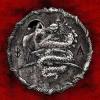
Desert species usually have really long legs because they need to keep their bodies of the hot ground during the day.
i like that
Myrmecocystus mexicanus has legs like that.
I have read that about long legs and desert species, and it makes sense to me, but there are all sorts of ant species in the desert that have short legs too, so I don't know how much that really means. For example, all other Pheidole, Acromyrmex, Cyphomyrmex, and Solenopsis all have short legs.
I guess it depends how sensitive they are to heat.
True.
I do see Acromyrmex foraging late at night, as well as Cyphomyrmex. Funny thing is this particular species of Pheidole I only see foraging at night.
They were soft and I think they were parasitic.
Mine were soft and parasitic as well... Not much difference, but mine were WAY whiter.
Although.... I am not sure they were parasitic, I eliminated all of them except in the colony of the black unidentified species, which where they are multiplying. ![]()
Edited by Gregory2455, September 2 2014 - 3:37 PM.
Some of these were white too, because they were very new and had not darkened yet.
Edited by dspdrew, November 25 2023 - 8:10 PM.
dspdrew
Yeah, I was pretty pissed. I'm glad I have P. desertorum vistana now though, they're almost exactly the same.
Edit: They were actually P. vistana and part of this journal now.
Edited by dspdrew, November 25 2023 - 8:10 PM.
dspdrew
Yeah, I was pretty pissed. I'm glad I have P. desertorum now though, they're almost exactly the same.
That is good. ![]()
I think right now i would do anything for xerophilla or gilvescens, something not in the fallax group.
Update 10-2-2014
I've been keeping this colony's test tube in a foraging container for the last month. They for some reason are losing workers as fast as they're being produced. Today I put them in a new test tube and got rid of all the dead ones, as a lot of them had mold starting to grow on them. I actually put them in the new modified test tube I recently created to give it a test also. Now the colony has about as many workers as it did on the last update, and no more foraging container. I want to see how well they do back in just a test tube only.
Update 10-18-2014
After the last worker finally died last week, today queen died as well. I guess I'll have to try again next year.
![]() Man that sucks. Fallax-group Pheidole seem harder to keep than others.
Man that sucks. Fallax-group Pheidole seem harder to keep than others.
Update 7-1-2015
I found three more of these queens wandering around on a dirt road in Trabuco Canyon, California around 9:00 pm.
The first one was found 6-9-2015, and was a dealate. It laid tons of eggs, and now has pupae that are getting close to eclosing.
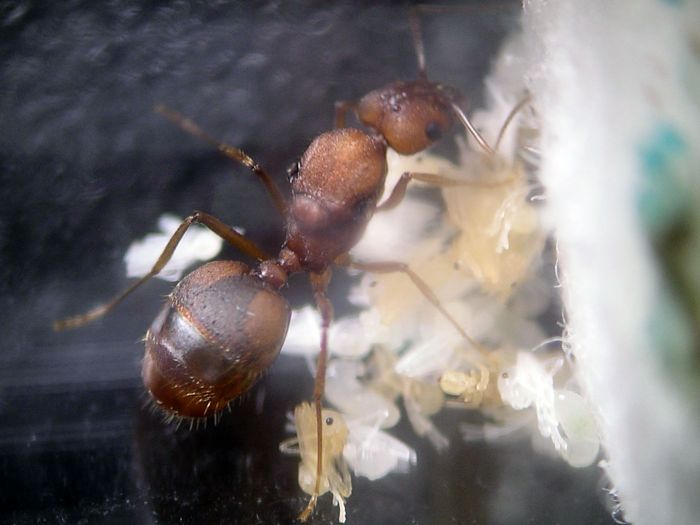
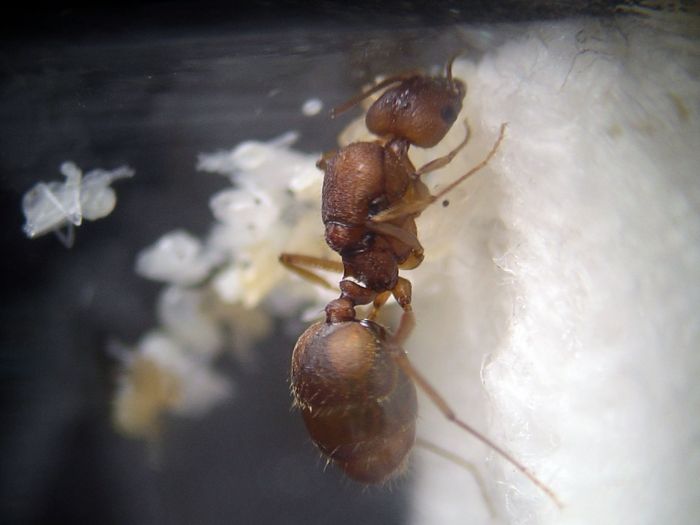
As you can see, these have such long legs, the pupae can hardly fold up like they normally do.
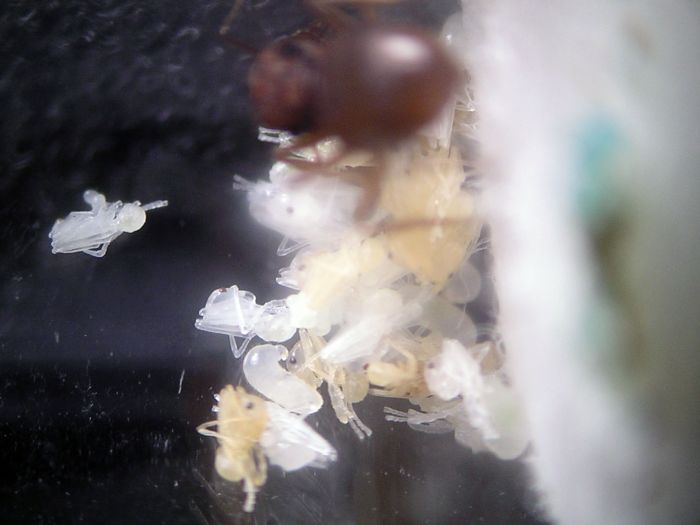
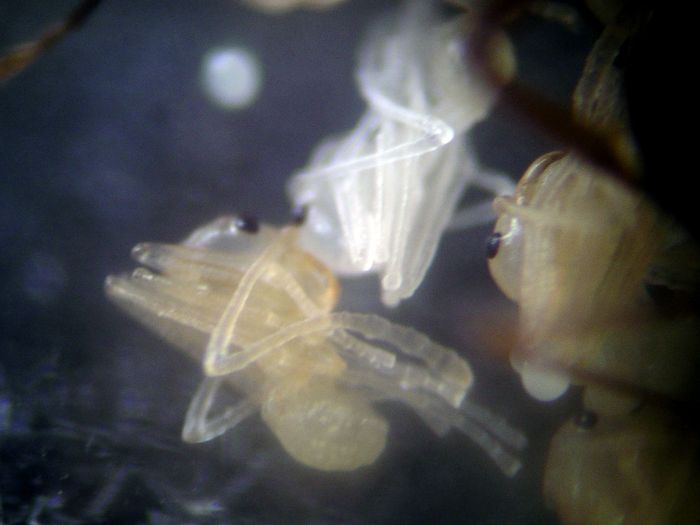
The other two were found on 6-28-2015 and still had their wings.
A day or two later the alates both removed their wings and laid a small piles of eggs.
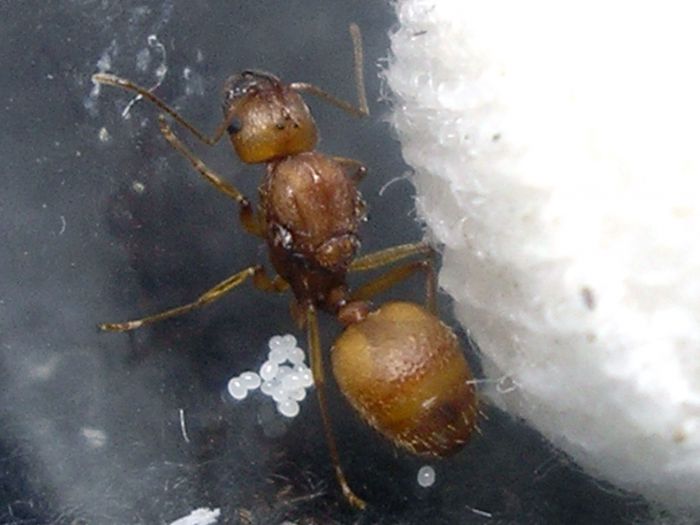
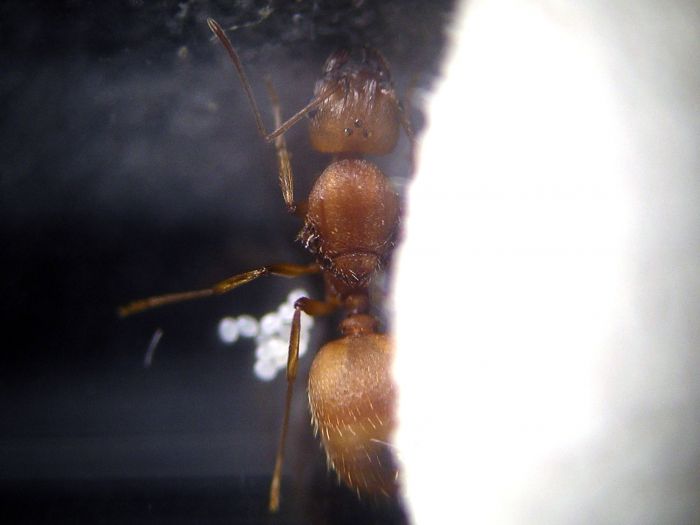
Hopefully I have better luck with these this time.
Those pupae look awesome! I understand why you like these vistana/desertorum now, I want a colony myself!
Current Species:
Camponotus fragilis
Novomessor cockerelli
Pogonomyrmex montanus
Pogonomyrmex rugosus
Manica bradleyi
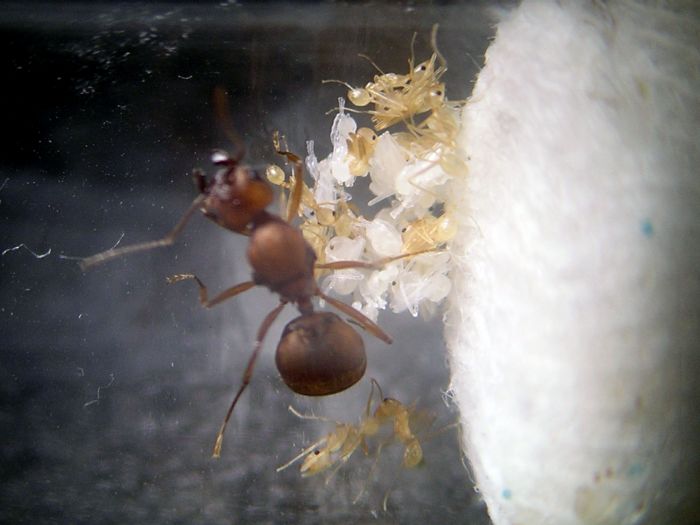
Ant Keeping →
Ant Keeping Journals →
cooIboyJ's Nylanderia vividula journalStarted by cooIboyJ , Sep 6 2025 |
|
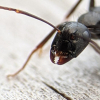
|
||
Ant Keeping →
Ant Keeping Journals →
Ants_Dakota's Camponotus sp. JournalStarted by Ants_Dakota , Jul 13 2025 |
|
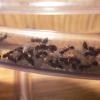
|
||
Ant Keeping →
Ant Keeping Journals →
Strickys Formica JournalStarted by stricky_ants , Jun 21 2025 |
|
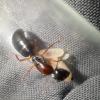
|
||
Ant Keeping →
Ant Keeping Journals →
AntTx's Camponotus sansabeanus JournalStarted by AntsTx , Jun 17 2025 |
|
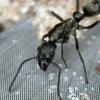
|
||
Ant Keeping →
Ant Keeping Journals →
The Bark Battalion (Liometopum occidentale)Started by AntsGodzilla , Jun 3 2025 |
|
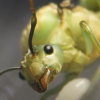
|
0 members, 0 guests, 0 anonymous users